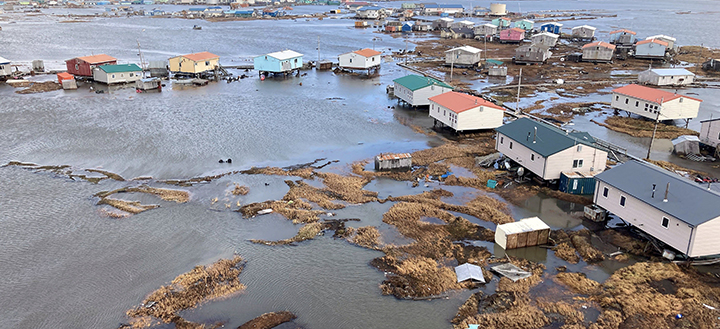
Eric Letvin, PE, CFM
Vice President of Resilience
Eric Letvin is the Vice President of Resilience for Tidal Basin Group, where he spearheads innovative strategies to bolster community resilience and reduce vulnerability to hazards. He is a recognized leader in disaster resilience and hazard mitigation and brings over 30 years of expertise to Tidal Basin.
With a foundation in environmental engineering and law, Eric has been instrumental in transforming federal disaster programs and developing national risk mitigation policies that deliver equitable and impactful results. Known for his ability to lead large-scale initiatives, he combines deep technical understanding with a commitment to driving meaningful change. His efforts have consistently advanced resilience across diverse communities and industries.
Before joining Tidal Basin, Eric served in several high-profile roles across the Federal Emergency Management Agency (FEMA), the White House National Security Council, and led hazard mitigation committees across the federal government and with international partners. During his recent nine-year tenure as the Deputy Assistant Administrator of the Mitigation Directorate at FEMA, Eric supervised over 290 full-time staff, was responsible for all FEMA mitigation grant programs, led floodplain management nationwide, reduced barriers for communities to access federal funding, and helped execute the National Flood Insurance Program. He served as the program executive to execute the Building Resilient Infrastructure and Communities (BRIC) grant program, the Hazard Mitigation Grant Program (HMGP), the Flood Mitigation Assistance (FMA) grant program, and led the implementation of the Safeguarding Tomorrow through Ongoing Risk Mitigation (STORM) Act.
Among Eric’s numerous achievements, he drove record obligations of over $2.5 billion for mitigation grant programs in FY24 (the highest in 28 years) and made significant contributions to the industry by managing and co-authoring more than 25 influential FEMA publications on hazard mitigation, focused on protecting infrastructure and communities from the impacts of floods, earthquakes, wind, and wildfires.
Eric’s unique skills include expertise in community and infrastructure resilience, building codes and standards, climate resilience, including wildfire mitigation, implementing the National Flood Insurance program and resilience policy, and community-driven relocation. Notably, he served as Director of Hazard Mitigation and Risk Reduction Policy while serving in the White House, and was the lead author of three executive orders to drive federal policy and funding for flooding, earthquakes, and wildfires.
Eric holds multiple degrees and certifications, including his Juris Doctor (JD) from the University of Maryland – Baltimore, and bachelor’s and master’s degrees in environmental engineering from Syracuse University. He is a licensed Professional Engineer (PE), member of the Bar (Maryland), Certified Floodplain Manager (CFM), and active member of industry organizations like the Association of State Floodplain Managers (ASFPM) and the American Society of Civil Engineers (ASCE). He has also earned accolades, such as the Department of Commerce Gold Medal for Distinguished Service.
As a visionary strategist and skilled coalition-builder, Eric continues to advance disaster resilience by safeguarding communities through innovative solutions that address the growing climate challenges and future risks. His dedication to transformative leadership, collaboration, and delivering tangible results sets him apart as a true trailblazer in the field.
Education
- J.D., University of Maryland, Baltimore
- M.S., Environmental Engineering, Syracuse University
- B.S., Environmental Engineering, Syracuse University
Professional Involvement
- Member of the Maryland Bar
- Member, Association of State Floodplain Managers (ASFPM)
- Member, American Society of Civil Engineers (ASCE)
Training
- Licensed Professional Engineer (PE)
- Certified Floodplain Manager (CFM)
Related insights and news

Tidal Basin Welcomes E. Scott Tezak as Chief Operating Officer
Tidal Basin is pleased to announce that E. Scott Tezak, PE, has joined our team as Chief Operating Officer (COO)….

Tidal Basin Launches Alaska’s Emergency Shelter Program
In the wake of Typhoon Halong, which brought catastrophic flooding and widespread destruction to western Alaska, a swift and decisive…

Tidal Basin Welcomes Kevin Bush, Senior Director and Practice Lead
Tidal Basin is pleased to announce that Kevin Bush has joined our team as a Senior Director and Practice Lead…